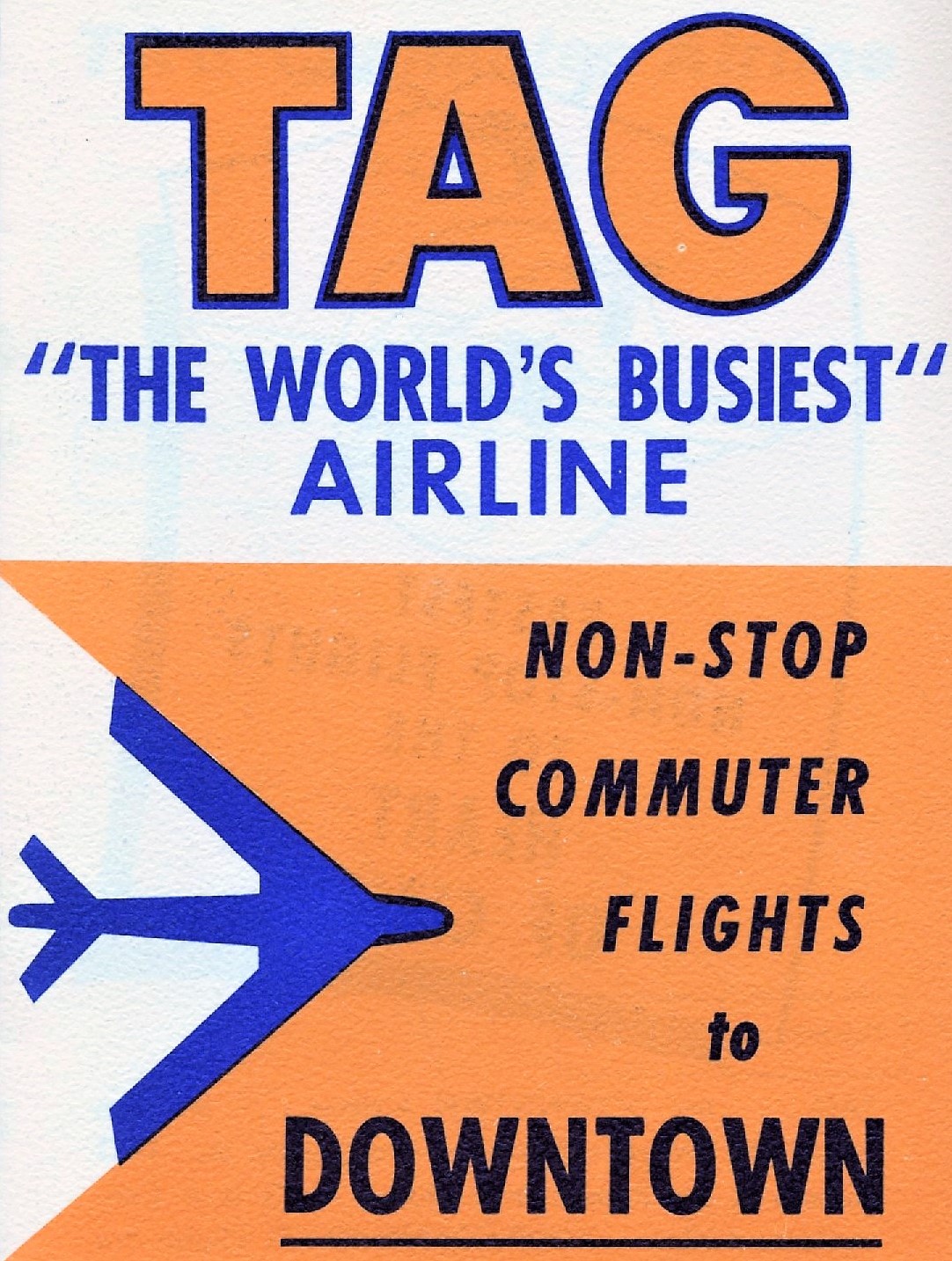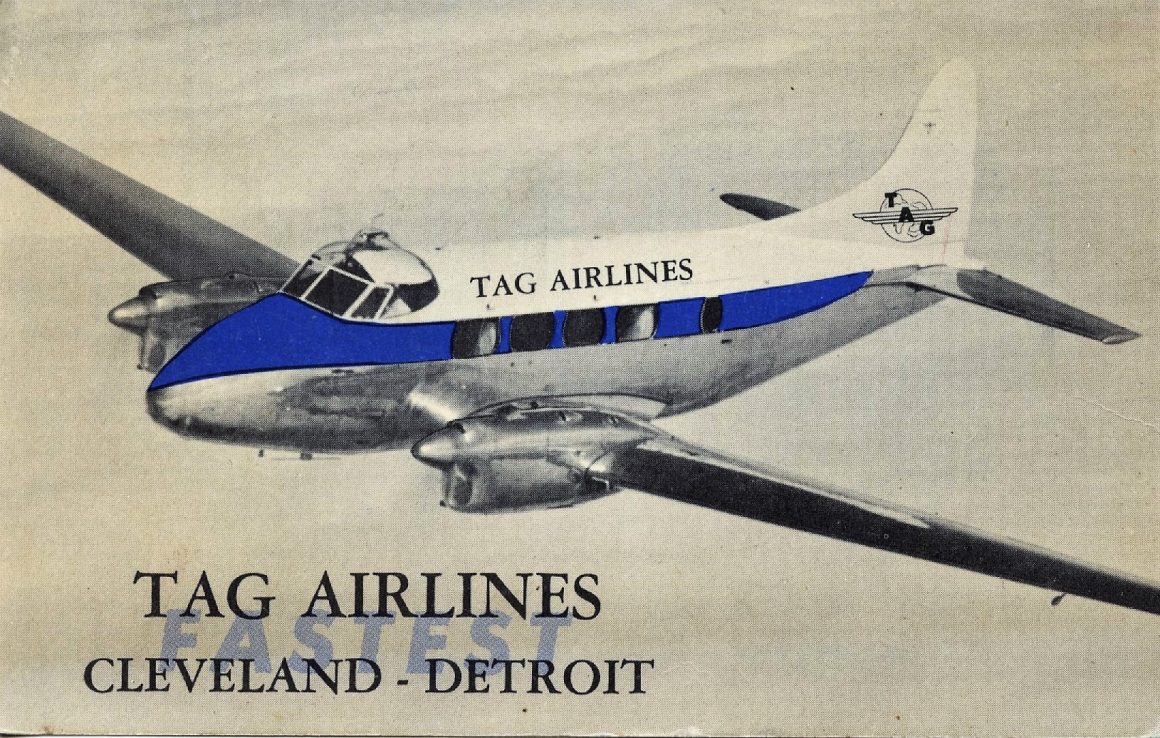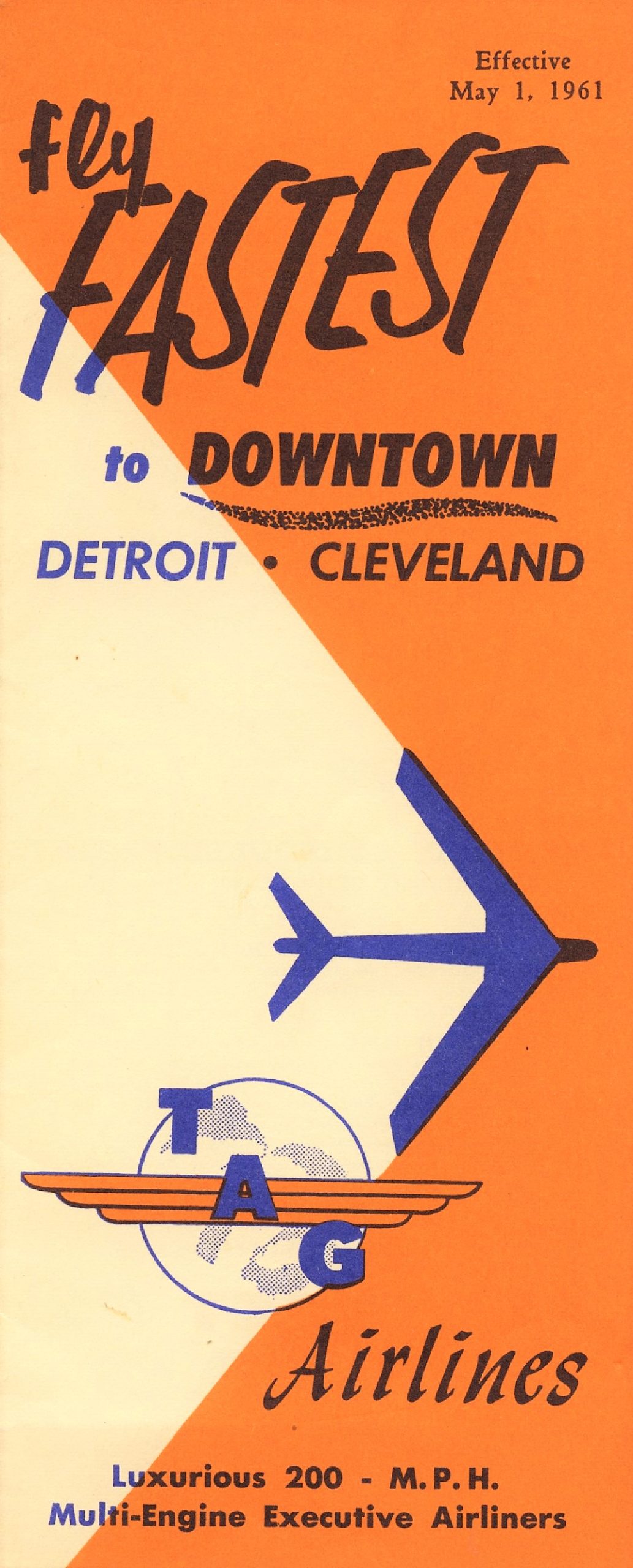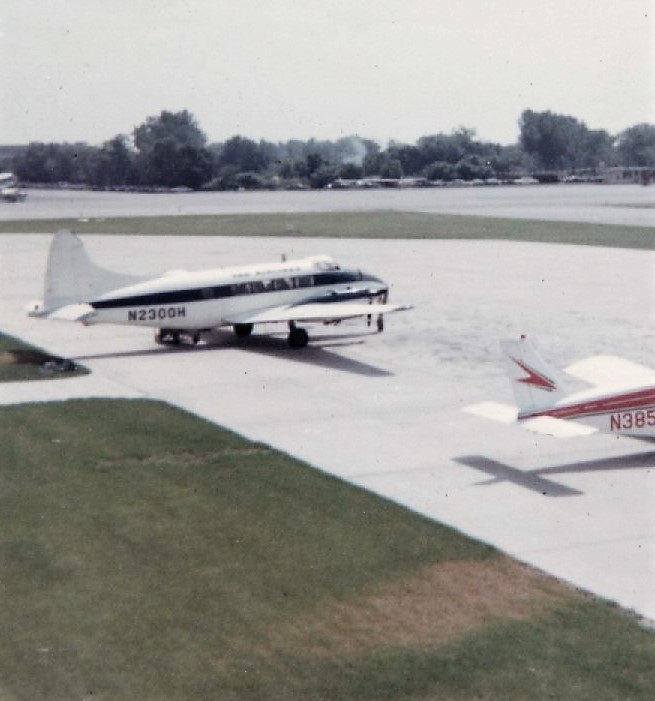TAG was a true commuter’s airline.
During the 1950s and ‘60s, Detroit – then the nation’s fifth largest city – and Cleveland (eighth largest) were both industrial powerhouses. Of course, Detroit was known for its automobile assembly lines (the Motor City), while Cleveland produced everything else: pumps, valves, machinery… anything and everything related to manufacturing.
The highway distance between the two cities, around the edge of Lake Erie, is approximately 168 miles (270 km), but the air distance directly across the lake is only 90 miles (144 km).

FIND A NEED AND FILL IT
In 1957, Ross Miller purchased a small company called Taxi Air Group, an outfit that had been in existence since 1955. Using the initials of his new acquisition, T.A.G., Miller inaugurated scheduled service between Downtown Detroit and Downtown Cleveland, operating as TAG Airlines.
In Detroit, TAG’s base was Detroit City Airport (DET), located at Conners and Gratiot Streets, a 15-minute cab ride from the city center. This was far more convenient for businessmen than Detroit Wayne County Metropolitan Airport (DTW) or the distant Willow Run (YIP).
In Cleveland, TAG operated out of Lakefront Airport (CEL)—later known as Burke Lakefront Airport (BKL)—which was literally on the edge of downtown. This was much closer to Public Square and the heart of the city than Cleveland Hopkins Airport (CLE).

A TRUE COMMUTER AIRLINE
TAG found a niche for itself long before the term “commuter airline” came into widespread use. In a way, TAG invented the commuter airline with its steady operation of a fast “downtown-to-downtown” service in a busy market. Customers could depart from one of the two cities, conduct their business in the other, then fly home in time for dinner.
TAG experimented with other routes over several years. Still, the airline’s consistent bread-and-butter run—and its reason for existence—was to serve the constant flow of traffic between Detroit and Cleveland.

SMALL PLANES, FREQUENT FLIGHTS
The Company employed a fleet of British-built, eight-passenger DeHavilland DH-104 Doves to operate its impressive flight schedule. At the end of 1969, TAG was operating 22 round-trips per day on weekdays between the two cities with several services on weekends.

For years, the Company had unsuccessfully petitioned the Civil Aeronautics Board (CAB) for permission to operate larger aircraft on the route across Lake Erie. Authorization finally came late in 1969 when the Board issued TAG a highly coveted Certificate of Public Convenience and Necessity, designating it as an integral part of America’s airline system. But the Board’s action came too late to save TAG.

THE BEGINNING OF THE END
In the late 1960s, Cleveland and Detroit began to see a slow decline from their prominent roles as manufacturing centers. The so-called Steel Belt—a term referring to mid-America’s industrial heartland—was taking on a new name: the Rust Belt. In 1970, Detroit still held its position as fifth-largest city, but Cleveland had slipped to tenth. The transfer of manufacturing jobs to other parts of the country and competition for the American automobile industry from overseas did not help TAG’s revenue stream.

Tragically, TAG’s demise was set in motion before the company could add larger aircraft to its fleet. On 28 January 1970, a DeHavilland Dove, registration number N2300H, operating as Flight 730, a 0730 departure from Cleveland to Detroit, crashed into the frozen waters of Lake Erie 12 minutes after takeoff from Lakefront Airport. The cause of the crash was eventually determined to be the failure of a joint connecting the right wing to the aircraft’s fuselage. It was caused by metal fatigue. All nine people aboard the airliner perished.
Although TAG Airlines was found to be free of fault in the crash, the damage to the carrier’s reputation was fatal. In April 1970, TAG’s operation was down to 10 round-trips per day on weekdays, with no service on weekends. By the end of the year, the company was out of business.
Wright Airlines, formed in 1967 by a former TAG employee, became the sole surviving carrier on the Downtown Detroit—Downtown Cleveland route.

A SIMILAR INCIDENT
Fifteen months after the TAG accident, an Apache Airlines DeHavilland Dove crashed on a flight from Tucson to Phoenix. The cause was determined to be the same as in the TAG accident: separation of the right wing from the fuselage due to undetected metal fatigue. The Apache aircraft, N4922V, was known as a Carstedt CH-600A, a Dove that had undergone conversion with turboprop engines and a lengthened fuselage in order to accommodate more passengers.

EPILOGUE
TAG is just a memory today in the history of commercial aviation. Another airline, Transportes Aereos Guatemaltecos in Central America, has now adopted the TAG name.
But there was a time when this little powerhouse of an air carrier served as a vital link in the Industrial Midwest and proudly billed itself as “The World’s Busiest” Airline.
